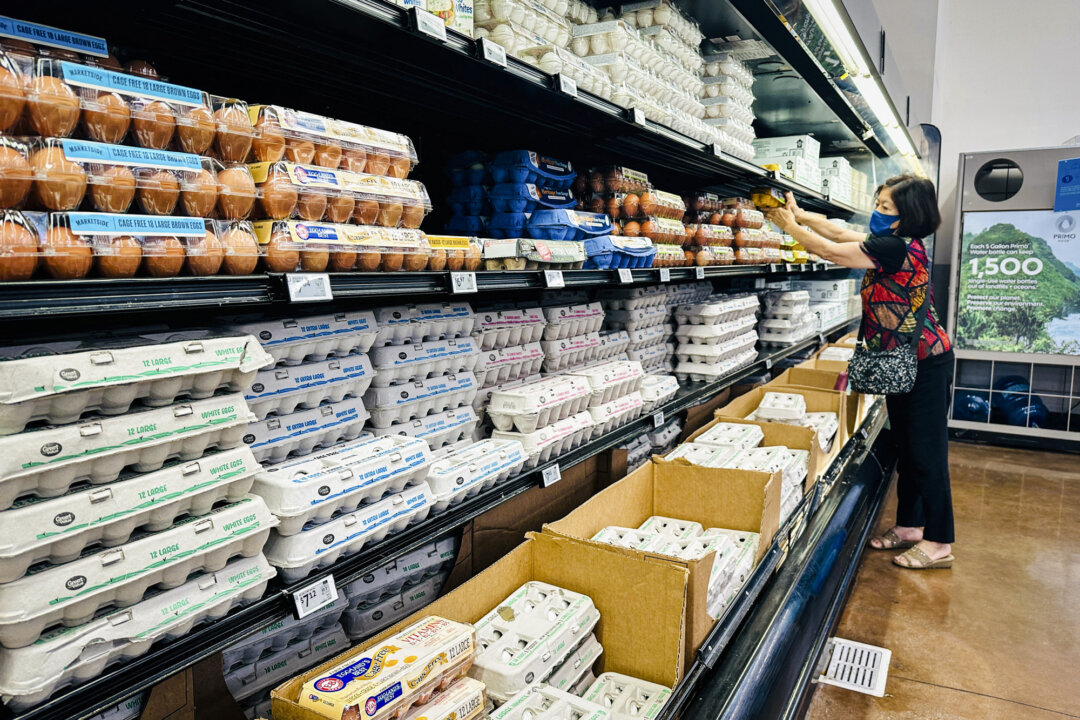Egg-laying hen losses attributed to highly pathogenic bird flu have fallen sharply since the end of February.
Consumers finally saw lower egg prices in the grocery store in April, according to a new federal report.
In April, according to the Bureau of Labor Statistics’ latest Consumer Price Index Summary report, the average price paid for eggs dropped by 10.5 percent. However, the price of the household staple is still up by 49.3 percent from the observation taken in April 2024, according to the same metric.
The price and availability of eggs became a major concern in the United States as the average wholesale price of large, white eggs shot higher than $8 a dozen in February. This led to consumers seeing prices as high as $10 per dozen in some regions of the country.
Today, according to the Department of Agriculture’s latest Egg Markets Overview report, published May 9, the average wholesale price of eggs is down to $3.36 per dozen from the early 2025 high.
As for the retail price, the Department’s Weekly Retail Egg Feature Activity report, also published on May 9, observed a national average price of $3.07 for a dozen large, white conventionally raised eggs.
In a statement, the White House said egg prices had seen “the largest one-month decline in more than four decades.”
“Inflation has fallen to the lowest level in more than four years as April’s Consumer Price Index smashes expectations for the third straight month in President Donald J. Trump’s Golden Age,” the May 13 statement said.
According to animal health and agricultural economics observers who spoke with The Epoch Times earlier in 2025, most of the egg price spikes were attributable to catastrophic animal losses caused by widespread outbreaks of highly pathogenic avian flu, or bird flu. Losses are particularly difficult for the egg industry since there is a long span between hatching a new hen and the start of each bird’s productive life.
In 2025, according to the USDA, about 31.3 million egg-laying hens were lost due to the disease. The losses peaked in late January and February, leading to extremely high egg prices. Since the end of February, the pace of detections—and therefore losses—has fallen sharply. In March and April, about 1.2 million birds were lost.
Farmers, as a condition of U.S. veterinary and financial policy, are required to depopulate, or cull, the entirety of their flock if bird flu is detected on the farm. As the U.S. egg industry is composed of many large-scale farms, a single outbreak can lead to more than a million birds being culled. Farmers who do not follow this guidance may not receive indemnity repayments from the U.S. government to help them recover from their losses.
As egg prices caught the attention of consumers and the White House alike, Secretary of Agriculture Brooke Rollins promised the USDA would take a new approach to controlling the disease. Nevertheless, the USDA continued to endorse the policy of stamping out the virus.
The latest outbreak of H5N1 bird flu began in February 2022 and has continued since. The disease has hit operations in the United States, Mexico, and Canada. Since it is believed to be spread by migratory birds, new infections are highly seasonal based on wild bird migration patterns.










Leave feedback about this